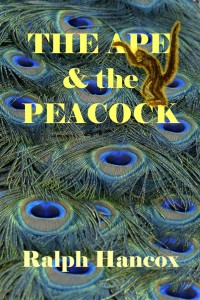
Chapter 1
BY THE MOST exacting standards, Turnerville was doing its solemn duty at the War Memorial. The Civic Band, with trousers pressed, stood to the right of the memorial. The orderly lines of the Turnerville Branch of the Royal Canadian Legion stood in front. The civilians, the mothers and families, provided the left flank. On the stone steps, suitably reverent, stood the civic dignitaries: the mayor of Turnerville; three aldermen with war service; three Mothers of the Fallen; the chairman of the Board of Education; a minister of the United Church; and, the person to whom all looked, of whom all were aware, in whom all put their trust – the provincial representative and imposing figure of Cabinet Minister W. J. (Willy) Trundle.
Willy Trundle was an “aristocrat”; that is to say, he was one of the best citizens and he was in the government. His first traceable ancestor had come north from the uniting colonies of America in the invasion of 1775. This renegade abandoned soldiering and started again at his true occupation: tanning hides. Because of a tendency toward lustiness (shared by several of his descendants), he was forced into marriage with the daughter of an immigrant Calvinist.
Successive generations of Trundles inherited an ever-growing fortune. They were close with money – except when it was advantageous to spend it. They were reserved with their acquaintances – except when it was profitable to be open. Much respect accrued to the family over the years. It was the custom, in the generation before Willy, for townsfolk to doff their hats to the Trundles – men or women. But the most fascinating part of the Trundle ancestry, which explained much in Willy’s nature, occurred prior to the family records.
The father of that early invading colonist had slipped into a tannery in Southern parts to escape a mob. He had raped the daughter of a successful settler engaged in the slave trade. It was not the rape that had angered the mob so much as the suspicion that he carried Negro or Indian blood – or possibly both.
In some ways, Willy was a throwback to this renegade. He had shortened his name from Willibus Jeremiah to W. J. (Willy) – something his father would have forbidden. Willy was friendly and handsome; the look in his eye attracted speculation by many a woman. Willy stood on the steps of the War Memorial not only by virtue of his political distinction but also because of his war service. From a private in the First World War, he finished as a major in the Second.
The Ape & the Peacock Description:
“Malfeasance! Why, that’s preposterous. If there was anything to it at all, it would be merely a bit of departmental muddling.
Was it credible that he could be thought a crook and a swindler? Patently, the answer was no. He had not received one cent for his trouble. In private industry, the work he had done on this enterprise alone would have made him a rich man two or three times over. All he had received was an annual stipend of a measly $12,500. He could make more managing his tannery.”
It’s 1957 in the fictional Canadian Province of Superior. In the span of just a few days in November, the lives of several high-level government officials and a colourful cast of “destitutes” are about to change forever. ”
In this penetrating social commentary by the author of Con Job and Scandalous, wrongdoings lead to shockingly unequal consequences for the privileged and the dispossessed.


